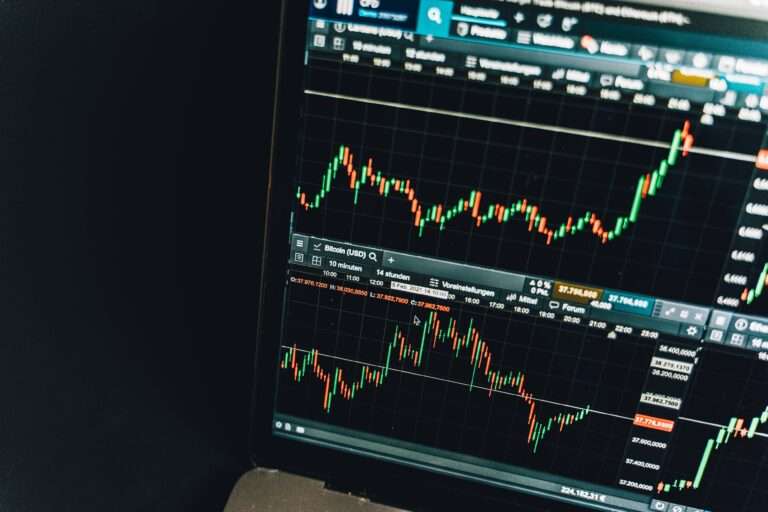The Holy Grail Trading Strategy
Many traders search for the trading equivalent of the holy grail but leave unsatisfied and disheartened. There is no perfect trading method, so let’s state that right now.
The totality of many trading approaches may be considered the trading equivalent of the proverbial “holy grail.” There is no one plan that always works, and there is no one trading method or manner that will make you rich. You should build a portfolio of various trading methods that work well together because of this.
An Equity Curve Based On The Holy Grail In Trading
An equity curve can resemble the holy grail. The slope of your capital rises steadily from almost zero to the upper right corner, with essentially no drawdowns. If you can control exponential growth, it might even look better.
But even the most ignorant beginners know that the above equity curve is unreachable. If you manage such an equity curve in a backtest, you may be certain that you are either curve fitting or your parameters are incorrect. Although the equity curve shown above may be in your dreams, it is utterly implausible and involves crashes and booms.
You should continue reading to learn more about the holy grail trading method or strategies so that you can reduce drawdowns and losses:

Is There A Holy Grail Tradings Indicator?
There isn’t a perfect trading indication, unfortunately. Many traders are looking for the ideal trading strategy or signal. Unfortunately, there is no such thing. Since the markets are always changing, no approach is guaranteed to be effective. Many people squander effort trying to make a decent strategy flawless in order to achieve curve fit, which renders the approach ineffective for forecasting the future.
The good news is that maybe there is a Holy Grail after all. Even while it’s not the kind of Holy Grail that most traders seek, it nonetheless supports a healthy trading industry. Diversification and lack of connection between your trading tactics are necessary for a steadily increasing equity curve:
Holy Grail Trading Strategy: Consistency, Diversification, And Non-Correlation
Consistency, correlation, and diversity should be the guiding principles of all your trading. Or, more specifically, the lack of correlation between your trading tactics. Understanding non-correlation and diversity is crucial because they are the main causes of consistency. The only holy grail tactic is this one! As a result, trading has a holy grail setup.
It would be beneficial to diversify into a number of unrelated tactics. Other tactics may be counterparts of when you win or lose in one strategy.
Quant Trading Gets You Closer To The Holy Grail Trading Strategies
What justifies engaging in quantitative trading?
- You take emotions out of trading or at least minimize them.
- The number of trading methods you can use is essentially unrestricted.
- By adding or deleting tactics, you can complement existing strategies.
- Execution time is nonexistent.
- It gives backtesting more time.
The Holy Grail Trading Strategies Includes:
How do you build a diverse trading company that could lead you to the trading method that is the Holy Grail?
Trade Many Markets And Asset Classes
To boost diversification, simply add more assets to your portfolio. You might diversify your strategies by focusing on other assets in addition to equities, which are typically highly correlated, such as crude oil, sugar, natural gas, foreign exchange, metals, etc. Since every market differs, what works in stocks is unlikely to work in copper. Most of that is good!
Correlations do, however, tend to rise during panics and volatile periods, as we saw in March 2020 and the GFC in 2008–2009. There are some intriguing facts in the essay titled “The anatomy of a bear market.”
Use Different Types Of Strategies
Three of the most straightforward trading strategies you can use – momentum, mean reversion, and trend following – should help you balance out fluctuations in your bankroll.
Trade Both Long And Short
Finding lucrative short tactics is challenging due to inflation and earnings growth. Additionally, they are less inclined to work “constantly.” Except for asset classes based on relative values, like currency, most markets slowly move upward. Markets tend to decline more quickly than bull markets increase in short-term trading compared to long-term trading. Bull markets increase with time. Because of this, short selling is challenging, but going in this direction provides risk reduction.
Most short positions face a long-term headwind from inflation, but even “mediocre” short tactics can offer beneficial diversification.
Different Time Frames Provide Diversification
Long trades can succeed even during a bear market, depending on the duration. The largest up days typically occur during a bad market or panic.
Let’s examine the Global Financial Crisis (GFC) bear market statistics in 2008–2009, which lasted from May 2008 until the bottom in early March 2009 and saw the S&P 500 lose more than 50% of its value. There were 99 up days and 104 down days during those months despite the sharp decline in value.
Despite the sluggish market and the impending collapse of the financial system, nearly half of the trading days were positive. The difference is that whereas the average down day was minus 2.32%, the average up day increased by 1.79%. The S&P gained more than 1% on 51 days and more than 2% on 30 days. 76 and 45 were similar amounts for declines.
Since there were so many strong up days, mean-reversion techniques on equities did well (on the long side).
We saw tremendous upside increases even during a bear market when many people thought the financial disaster was close. It is precisely for this reason that shorting is challenging.
Long strategies should do well in any market based on the time horizon, according to the experience from 2008–2009. The events between the open and close may also be completely unrelated to the long-term trend. Strategies for day trading are useful.
We think your chances are better if you are unbiased and open to any timeline that seems promising. Don’t refer to yourself as a “day trader” or a “swing trader.” Be receptive to what the market has to offer! The law of huge numbers allows you to obtain enormous leverage when the trading is “outsourced” to your computer.
Always Trade Smaller Than You Like
No matter your experience, it is difficult to avoid the optimism/negativism bias. You count your chips and raise your stakes following a winning streak right before your strategies start to falter. Contrarily, you can cut your stakes after a losing streak out of concern for further losses. It’s a never-ending circle. When changing the size of your wager, exercise extreme caution. Better to consider the long term rather than the short term when doing this.
No matter how effective your tactics are, they won’t help you if you can’t put them into action. How do you correctly implement a strategy? To achieve this, trade modestly. Small trades allow you to trade with fewer emotions. Trading modestly can help you become less detached from money.
The Holy Grail Trading Strategy Requires Capital
A lot more capital is needed to implement a trading philosophy like the one discussed in this article than it would be if you only traded one trading technique. We do think that the more strategies you use, the better your chances of success are, therefore, if you are short on funds, you should reevaluate your goals and tactics.
“Buy And Hold” Is A Sensible Diversification
Make sure to save some cash for future appreciation. If your trading demands leverage, a wise trader diversifies into real estate, mutual funds, and ETFs as a sort of safety valve. Because we value simplicity, we advise using the simplest straightforward trading method possible: buy and hold.
Money printing (monetary inflation) and earnings growth are two advantages long-term investing has over-trading.
Is There A Holy Grail Trading Strategy Or Strategies? Ending Remark
There isn’t a single perfect trading strategy. Trading numerous various trading techniques is the closest thing to a holy grail trading approach.
Related Blogs:
The Future Of Money: What You Need To Know Today
Why Seasonality Matters In Trading
For More Subscribe to Our Newsletter:
Click here
Willkommen im deutschen Online-Shop für hochwertige Replica-Uhren, um die besten Replik-Uhren in Deutschland zu kaufen.









